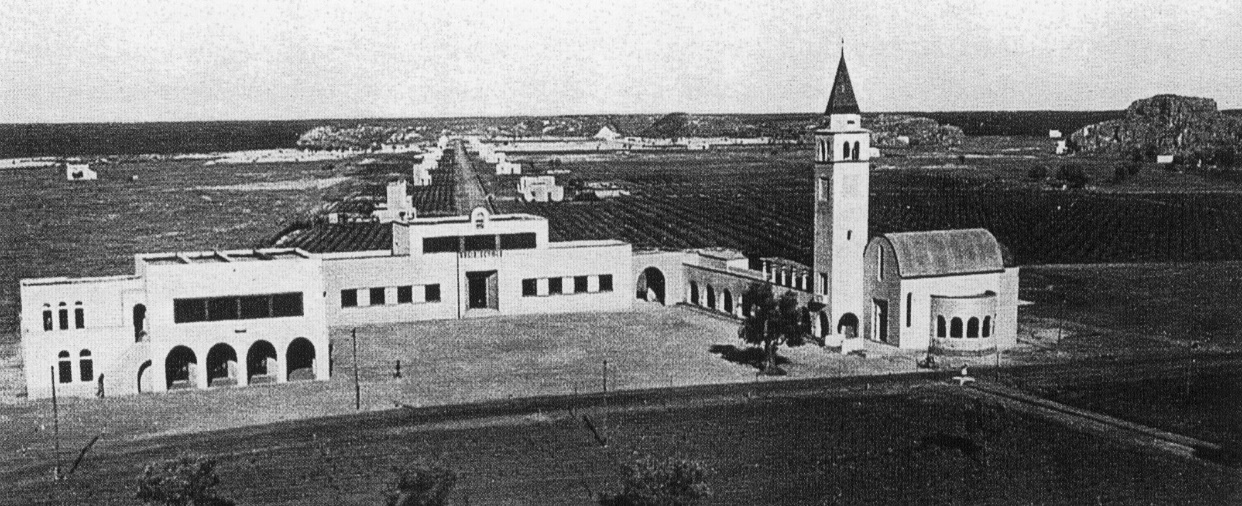Sulle radici del disegno urbano. Europa e Italia nei primi decenni del Novecento / On the Roots of Urban Design. Europe and Italy in the Early Decades of the Twentieth Century
Heleni Porfyriou

A. Bernabiti, R. Petracco, Borgo San Benedetto, Rodi, Greece, 1936-38
Abstract
The essay reviews the evolution of the Italian town planning debate of the first thirty years of the twentieth century, in the context of a broader European framework. Its goal is to highlight the local roots of urban design culture (if any) and the distinctive themes around which, both the planning debate and practice in the years of fascism, were developed. In parallel it aims to identify similarities and differences with respect to Europe and the legacy those years left to Italian postwar urbanism and urban design culture.
Considering that the focus of the volume are the numerous rural settlements (borghi) and peri-urban settlements (borgate) built by the fascist regime in the 1930s (both in Italy and in the colonies) and analyzed in architectural and urban design terms, this essay represents an introduction and contextualization of these Italian semirural settlements in the wider European framework.
Porfyriou, H. “Sulle radici del disegno urbano. Europa e Italia nei primi decenni del Novecento.” In Borghi rurali e borgate. La tradizione del disegno urbano in Italia negli anni Trenta, edited by G. Corsani and H. Porfyriou, 36-57. Roma: Palombi editori, 2017.



